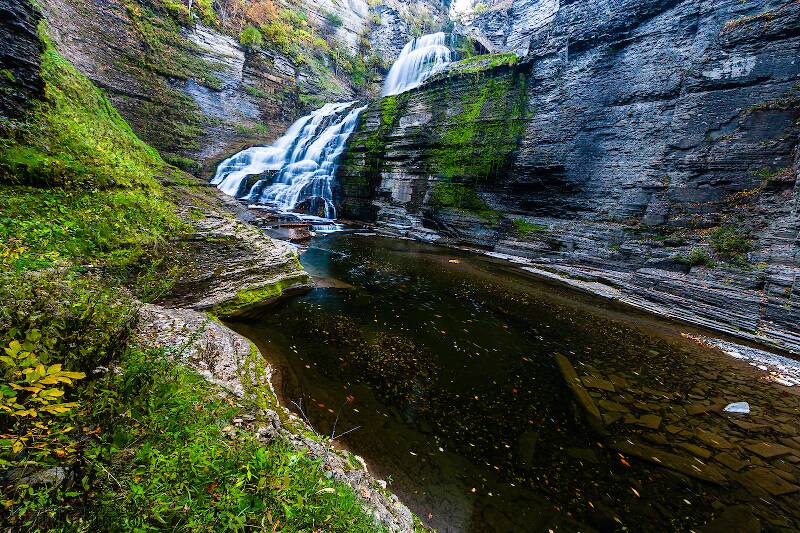
Hex Mayflies
Hexagenia limbata
The famous nocturnal Hex hatch of the Midwest (and a few other lucky locations) stirs to the surface mythically large brown trout that only touch streamers for the rest of the year.

Mayfly Species Sparbarus lacustris (Angler's Curses)
Taxonomic History
Species Range
Spinner behavior
The duns molt very quickly into spinners.Physical description
Most physical descriptions on Troutnut are direct or slightly edited quotes from the original scientific sources describing or updating the species, although there may be errors in copying them to this website. Such descriptions aren't always definitive, because species often turn out to be more variable than the original describers observed. In some cases, only a single specimen was described! However, they are useful starting points.
Male Spinner
Wing length: 4.5 mm
Mesonotum pale brown; fore femur dark black-brown; abdominal tergites pale, the posterior margins black.
Eyes dark; lateral ocelli transparent; vertex pale in the median area, dark cinnamon brown toward the eyes. Pronota and mesonota pale brown, pleura paler; a narrow dark transverse line between the fore coxae; anterior portion of mesosternum dark piceous; metasternum paler, with a dark piceous transverse band. Fore legs longer than body; femora dark blackish brown. Middle and hind legs entirely pale; femora about as long as tibiae and tarsi combined. Wings whitish, especially toward the posterior margin; subcosta and radius dark piceous in the basal two-thirds of their length. Abdominal tergites 4-10 pale, the posterior margins blackish. Sternites pale, with dark lateral spots on some of them. Tails whitish. Forceps longer than in B. prudens (now a synonym of Susperatus prudens).
This species is larger than B. prudens or B. flavus (now a synonym of Sparbarus flavus), and has longer forceps, as well as black posterior margins on the abdominal tergites which are not present in those species.
Nymph
Only the nymph of this species is known; it may be that this is really the nymph of B. idei.
Nymph apparently without tubercles on the prothorax, such as are present in B. nitidus. General color pale. A pair of zigzag bands on the vertex, from eyes to middle of occiput. Prothorax wholly pale. Mesonotum darker at anterior and posterior margins; curved black median pencilings. Legs pale, each joint with a single brown submedian band. “Basal black mid-dorsal triangles” on "segments in front and rear"; (Ndm.); middle segments obscurely brownish. Anterior margin of each segment, dorsally and ventrally, brownish, paler in the median area; a pair of black dashes on the posterior portion of tergite 10. Tails wholly pale, but with faintly brown joinings in the distal portion, at least of some specimens.
Start a Discussion of Sparbarus lacustris
References
- Caucci, Al and Nastasi, Bob. 2004. Hatches II. The Lyons Press.
- Knopp, Malcolm and Robert Cormier. 1997. Mayflies: An Angler's Study of Trout Water Ephemeroptera . The Lyons Press.
- Leonard, Justin W. and Fannie A. Leonard. 1962. Mayflies of Michigan Trout Streams. Cranbrook Institute of Science.
- Needham, James G., Jay R. Traver, and Yin-Chi Hsu. 1935. The Biology of Mayflies. Comstock Publishing Company, Inc.
Mayfly Species Sparbarus lacustris (Angler's Curses)
Species Range
Common Name
Resources
- NatureServe
- Integrated Taxonomic Information System
- Global Biodiversity Information Facility
- Described by Needham (1918)


